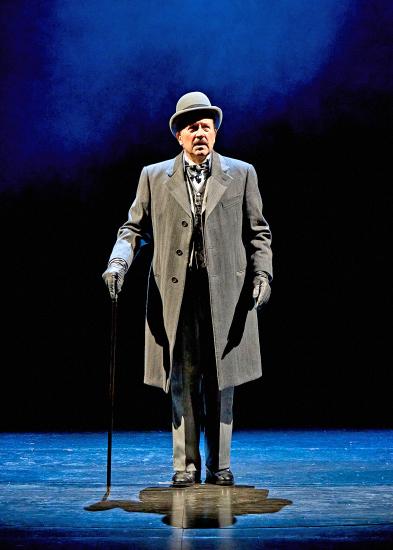Cambridge Arts Theatre, Cambridge – until Saturday 2nd November 2024
Reviewed by Steph Lott
5*****
Ken Ludwig’s stage adaptation of Agatha Christie’s beloved murder mystery proves that there’s still plenty of “steam” in this classic tale. The production, which opened last night at the Cambridge Arts Theatre under Lucy Bailey’s assured direction, demonstrates how effectively this story can transition from page to stage, offering a fresh perspective even for those familiar with its various screen incarnations.
Michael Maloney’s Hercule Poirot deserves immediate recognition as a worthy addition to the pantheon of great Poirot portrayals. Following in the footsteps of legends like David Suchet, Peter Ustinov, and Albert Finney might intimidate lesser actors, but Maloney crafts his own distinct interpretation while honouring the essential characteristics that make Poirot such an enduring figure. His impeccable comic timing elicits genuine laughter from the audience, while his moments of moral deliberation in the play’s darker segments showcase his dramatic range. The famous denouement scene, in particular, demonstrates Maloney’s ability to hold the audience spellbound as he unravels the complex web of deception.
Bob Barrett brings warmth and wit to Monsieur Bouc, creating a delightful dynamic with Maloney’s Poirot. Their scenes together provide much of the production’s humour, with Barrett’s more expansive performance style complementing Maloney’s precise characterisation.
Mike Britton’s ingenious set design deserves special mention. The creative use of sliding panels and rotating elements transforms the confined space of a railway carriage into a series of distinct locations, maintaining the claustrophobic atmosphere essential to Christie’s story while allowing for fluid scene transitions. The integration of pre-recorded footage with the physical set pieces proves particularly effective, adding a cinematic dimension to the theatrical experience. Even when a minor technical hiccup occurred, the stage management team handled it with such professional smoothness that it barely registered with the audience.
The production succeeds in solving one of the key challenges in adapting this particular story: how to maintain suspense when so many audience members know the solution to the mystery. Bailey’s direction keeps the focus on the psychological aspects of the story, allowing us to become invested in the moral dilemma central to the story rather than merely the mechanics of the plot.
This adaptation understands that the appeal of Christie’s story lies not just in its clever plot twists but in its exploration of justice, revenge, and moral ambiguity. The production manages to honour both the story’s serious themes and its entertainment value, creating an engaging evening of theatre that will satisfy both Christie aficionados and newcomers to the tale.

